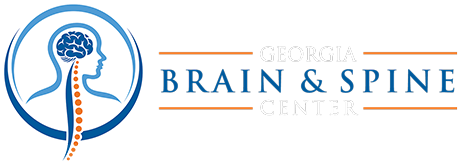Arthritis, specifically osteoarthritis, is a leading cause of back and neck pain in adults. Although it can occur anywhere in the spine, arthritis pain most commonly affects the lower back and neck area. This May, in honor of National Arthritis Awareness Month, the experts here at Georgia Brain & Spine Center wanted to provide some helpful information on osteoarthritis of the spine including how it can be successfully managed and treated.
 Unlike many forms of arthritis, osteoarthritis in the spine is simply caused by wear and tear on your joints over time. As the cartilage between the joints begins to break down, there is resulting inflammation and pain. These symptoms are typically more noticeable when you bend or twist your back. Osteoarthritis of the spine typically affects the joints between the vertebrae known as the facet joints. As the discs between the vertebrae become thinner over time, more pressure is applied to the facet joints, leading to additional friction and ultimately damage to the cartilage. For some people, degenerative disc disease, a condition associated with degeneration of the spinal discs, may contribute to osteoarthritis in the spine.
Unlike many forms of arthritis, osteoarthritis in the spine is simply caused by wear and tear on your joints over time. As the cartilage between the joints begins to break down, there is resulting inflammation and pain. These symptoms are typically more noticeable when you bend or twist your back. Osteoarthritis of the spine typically affects the joints between the vertebrae known as the facet joints. As the discs between the vertebrae become thinner over time, more pressure is applied to the facet joints, leading to additional friction and ultimately damage to the cartilage. For some people, degenerative disc disease, a condition associated with degeneration of the spinal discs, may contribute to osteoarthritis in the spine.
Back pain is the most notable symptom of osteoarthritis, however, the condition can manifest itself in other ways as well. This includes stiffness and a loss of flexibility in the spine (including a grinding feeling when moving the spine). Some people may experience pain or numbness in other areas of the body if their nerves have been affected. Headaches and fatigue are also common.
Thankfully, osteoarthritis of the spine is treatable. There are a number of potentially effective non-surgical treatments that we recommend starting with before pursuing spinal surgery. Medications like nonsteroidal anti-inflammatory drugs (NSAIDs) that can reduce inflammation can be a temporary option, in addition to physical therapy and simple lifestyle changes like losing weight. Epidural injections and facet block injections to the spine may be able to provide relief for some people.
For patients who are unable to find relief with non-surgical treatment methods, spinal surgery may be of assistance. Spine fusion surgery, a procedure designed to treat instability and significant pain, is often recommended. During the procedure, spinal instrumentation and a bone graft are placed between two vertebrae, encouraging the bones to grow together and decrease instability in the spine. Similar to those with spinal stenosis, some people who experience osteoarthritis in the spine can benefit from decompression laminectomy. This minimally invasive procedure is used to create more space in the spine and reduce pressure on the spinal nerves by removing a small area of affected vertebrae (as well as thickened parts of the facet joint and ligaments).
The neurosurgeons here at Georgia Brain & Spine Center have seen firsthand how difficult and frustrating life can be for people who experience osteoarthritis of the spine. That’s why we work so hard to offer as many treatment options as possible in an effort to make sure each patient we see is able to find the right treatment option for their needs. If you would like more information on the spinal procedures that we perform, or if you would like a second opinion on a previous diagnosis, please contact Georgia Brain & Spine at 1 (800) GO-SPINE to schedule a consultation today with Dr. Elias Dagnew or Dr. Michael Hartman. And don’t forget to follow us on Facebook and Twitter for the latest news, practice updates, blog posts, and more.
